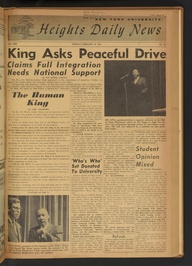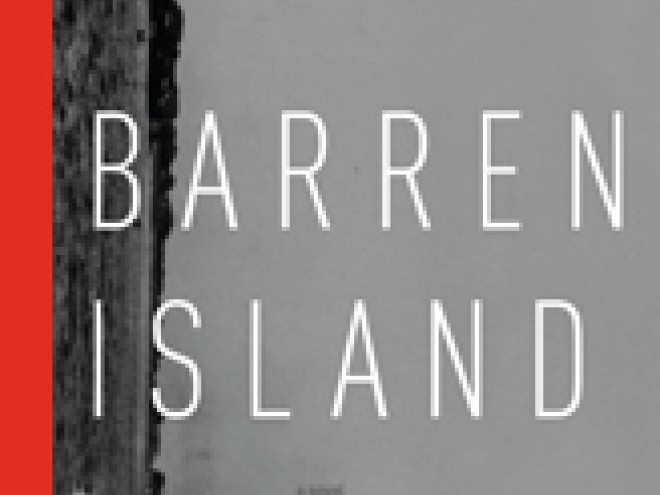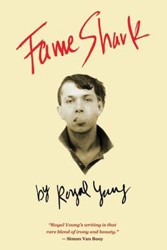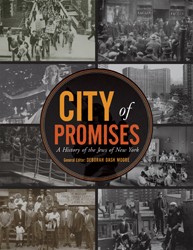 Despite the contributions of the internet, turning out a college daily newspaper today still requires human ingenuity and dedication, as it did more than a half century ago. Computers left to themselves don’t write editorials, accounts of student council intrigue, reviews of drama society productions, or play-by-play accounts of intercollegiate sports events, and they don’t know how to meet a deadline!
Despite the contributions of the internet, turning out a college daily newspaper today still requires human ingenuity and dedication, as it did more than a half century ago. Computers left to themselves don’t write editorials, accounts of student council intrigue, reviews of drama society productions, or play-by-play accounts of intercollegiate sports events, and they don’t know how to meet a deadline!
In my senior year at NYU’s Bronx (“uptown”) campus — way back in 1960 – 1961 — I wrote a lot about the facets of collegiate culture mentioned above. I was editor-in-chief of the student newspaper, the Heights Daily News (HDN). Since the newspaper covered a campus of only 2,000 students enrolled in NYU’s two uptown colleges — liberal arts and engineering — the publication held the distinction of being “the smallest college daily in America.” (By contrast, the Columbia Daily Spectator, which covered the comings and goings of tens of thousands of students and faculty at Columbia University’s campus in Manhattan’s Morningside Heights section a dozen miles to the south, had many richer and more provocative sources to draw from to produce its daily miracle.)
Whether or not NYU’s small Bronx oasis warranted a daily newspaper is not up for debate, especially since the HDN had already chalked up almost thirty years when I took over as editor. During my tenure, we put out a commemorative “Thirtieth Anniversary Issue,” and on the cover was a congratulatory telegram I received from President John F. Kennedy lauding our “EXTRAORDINARY VITALITY AS THE SMALLEST COLLEGE DAILY IN AMERICA.” In researching the trajectories of my predecessors during the preparation of the commemorative issue, we learned that many of them were quite successful. Two of my editorial board colleagues that come to mind today are a US Federal judge in Texas and a big-time real estate developer in New Jersey.
The HDN consisted of four pages — page one contained general campus news; page two, editorials, letters, features and opeds; page three, some more news, but mainly nationally matted ads (often cigarettes); and page 4, sports.
Though I hope our readers never noticed, producing the campus daily came with big difficulties. Fifty-plus years later, three obstacles stand out:
Getting News: If the essence of news in American journalism was controversy, not much of a newsworthy nature was happening on campus in the complacent early 1960s. I often ended up “making news” myself by digging behind the scenes, interviewing would be troublemakers, and doing what would be termed today “investigative journalism.”
I wanted to keep the newspaper pure, focused on the Heights campus and keeping out stories on national or municipal politics. We reported on campus academics, student activities, college financial issues, the comings and goings of faculty. To give the HDN more depth, I arranged for various series such as “The Future of the American University,” for which nationally known educators and thinkers — including U.S. Senator Hubert Humphrey, political theorist Russell Kirk, and novelist Leslie Fiedler — penned original pieces.
But not everything we wrote was so heavy. On a lighter note we started a “Miss Heights Daily News” contest in response to the campus having gone coed.
Getting Reporters: Few Heights students were bent on careers in journalism, so attracting staffers was always a problem. Sometimes the lure of a byline, or an editorial title such as Assistant Features Editor, helped, but not very often. What we never had a problem getting were sports reporters because many students were drawn by the prospect of attending games and traveling with the team at no cost and with preferential treatment. Ditto for filling the positions for reviewers of campus drama and musical productions.
Heights Daily News to the Stands: Unlike in today’s digitized world, every word we published back in the early 1960s was typed by hand and edited by hand. Every photo was cropped by hand, every page laid out by hand, and the pressmen printed everything by hand.
Delivering copy to Citywide Printing, at the other end of New York in lower Manhattan, always proved a hurdle. The early delivery run was at 4 p.m., and a Heightsman, usually a Lower East Side local (these were days when most students lived at home) was paid $3 to bring material to the printers. Office staff tried to finish by a 7 p.m. deadline, and on a once-a-month rotation one of us travelled to Citywide, usually by subway, to deliver the rest of the next day’s issue.
Delivering final copy meant staying at the printer’s until midnight or 1 a.m. waiting for the entire issue to be printed and proofread. Sometimes we had to wait for last minute sports results or drama production reviews to be phoned in and then we had to type it up for the pressmen. If articles came out too long or too short, headlines needed to be rewritten and captions changed. Remember, these were the days when print jobs had to be “typeset” — before word processing and page layout programs enabled us to know in advance how things would layout.
The camaraderie of the earthy, cigar-smoking printers served as a diversion for the tired, volunteer HDN tombstone shift.
The press run of the Heights Daily News ended about fifteen years after I graduated, when NYU sold its Bronx campus. I owe this deceased newspaper a great debt. The thousands of hours I put into its life greatly enhanced my people, communication and writing skills and set the groundwork for my interests in political science.
And more importantly, while my definition of excitement may be insipid, more than a half century later I still consider the challenges of the nine months between ages eighteen and nineteen, as editor of the Heights Daily News, among the most exciting times of my life. (And yes, for those of you who noticed, I was already a senior in college at age eighteen. As Peri quotes me in the book’s Preface, “I wasn’t brilliant, but ambitious…”.)
A Jewish Professor’s Political Punditry: Fifty-plus Years of Published Commentary by Ron Rubin is now available.


